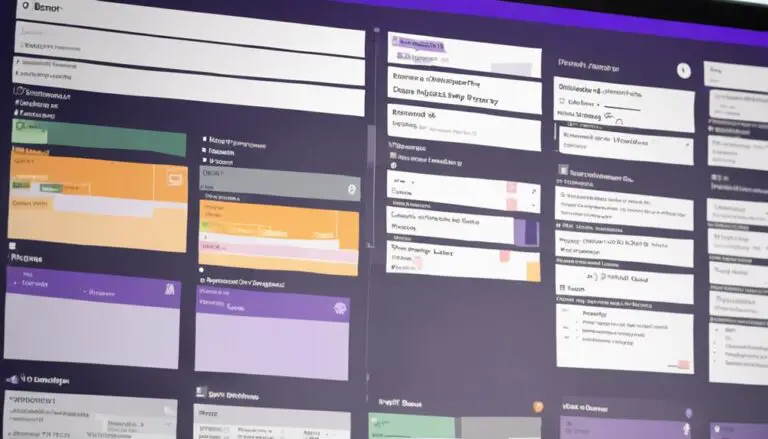You might be surprised to learn that despite the growing popularity of Kanban methodologies, the question of whether Kanban has a Product Owner remains a topic of debate among agile practitioners. Some argue that the concept of a Product Owner is crucial to ensuring that the Kanban process is aligned with the overall business goals and priorities. Others believe that the principles of self-organization and collective ownership in Kanban negate the need for a designated Product Owner. However, regardless of where one stands on this issue, it’s important to note that tools such as the sharepoint kanban board feature can greatly aid in the implementation and management of a Kanban system.
Understanding the nuances of roles within Kanban and how they align with traditional agile frameworks can offer valuable insights into optimizing workflow efficiency and enhancing team collaboration.
Delving into the specifics of this discussion could shed light on how organizations can adapt and tailor their approaches to better meet the demands of modern project management.
Key Takeaways
- Kanban does not have a traditional Product Owner role.
- Service Request Manager plays a similar role in prioritizing customer needs.
- Visibility and metrics are crucial for workflow efficiency and value delivery.
- Transitioning to Kanban requires focus on customer needs, value delivery, and process efficiencies.
Product Owner Role in Scrum
Navigating the dynamic landscape of Scrum, the Product Owner plays a pivotal role in steering the product towards success by managing the product backlog with a keen eye on project objectives. As the Product Owner, your primary focus is to represent the customer and stakeholders, ensuring their needs are met through prioritizing features effectively. Collaboration with the team is key in delivering value to the customer, as you provide clear requirements for development based on customer needs.
In Scrum, the Product Owner acts as the bridge between the team and stakeholders, ensuring that the product backlog reflects the most valuable work to be done. By working closely with the team, you help maximize the product's value and steer it in the direction that aligns with customer needs. Your role is crucial in maintaining effective communication channels and fostering a collaborative environment where everyone works towards a common goal – delivering a product that satisfies customer requirements.
Service Request Manager in Kanban
As a Service Request Manager in Kanban, your focus is on advocating for customer needs and selecting work items, ensuring efficient workflow management and alignment with the team's work. Here are some key responsibilities you hold in this role:
- Prioritizing Backlog Items: You play a critical role in prioritizing backlog items based on customer needs to ensure the team works on the most valuable tasks first.
- Efficient Workflow Management: You help in ensuring that work items flow smoothly through the system, minimizing delays and maximizing efficiency.
- Representing Customer Requirements: It's essential to accurately represent customer requirements to the team, facilitating the delivery of solutions that meet their needs.
- Aligning Customer Needs with Team's Work: By aligning customer needs with the team's work, you contribute to delivering value effectively and enhancing customer satisfaction.
In this collaborative role, your efforts are instrumental in streamlining workflow processes, improving lead time metrics, and addressing bottlenecks for enhanced value delivery.
Comparison of Roles in Agile
When comparing roles in Agile methodologies, the focus shifts between managing backlog items in Scrum and addressing client needs in Kanban. In Scrum, the Product Owner plays a crucial role in managing backlog items to achieve project goals, ensuring that the team works on the most valuable tasks first. On the other hand, Kanban's Service Request Manager concentrates on understanding and addressing client needs, selecting work items based on immediate requirements.
Transitioning from Scrum to Kanban may involve retaining the Product Owner role but with a different focus. In Kanban, the emphasis shifts towards managing backlog requirements and task prioritization to meet client demands efficiently. Mature teams often leverage roles like the Product Master or Service Request Manager in Kanban, particularly in large corporations where backlog issues are common. These roles help reduce cycle time and lead time by prioritizing backlog items, enhancing workflow efficiency, and improving value delivery.
Responsibilities and Functions
In Kanban, the responsibilities and functions of the Product Owner revolve around outlining the product for the customer, creating user stories, and organizing work items in the product backlog for efficient workflow management. Here are the key responsibilities and functions:
- User Stories: The Product Owner creates user stories that define the requirements from the customer's perspective.
- Workflow Management: They organize user stories and work items in the product backlog to ensure a smooth and efficient workflow.
- Prioritization: The Product Owner identifies the order of the to-do list and prioritizes user stories based on dependencies and importance.
- Continuous Improvements: They enhance process efficiencies through continuous improvements in the workflow, adapting to changes and optimizing the overall process.
Importance of Visibility in Kanban
When working within a Kanban system, it's crucial to maintain visibility on the progress of tasks and team collaboration through visualization.
By monitoring flow efficiency and setting WIP limits to focus on critical tasks, you can enhance workflow efficiency and team productivity.
Ensuring that stakeholders have a clear view of feature priorities and work status through Kanban boards fosters better communication and alignment within the team.
Visualizing Work Progress
To enhance project transparency and streamline workflow efficiency in Kanban, visualizing work progress through Kanban boards plays a pivotal role. Here's why it matters:
- Kanban boards: Utilize visual boards to track the progress of features and tasks effectively.
- Visual representation: Easily understand the sequence and current status of each work item for stakeholders.
- WIP limits: Set limits to improve team focus, reduce multitasking, and prioritize critical tasks.
- Team capacity: Respect the team's capacity by enforcing WIP limits, ensuring optimal productivity and task management.
Team Collaboration Through Visualization
Embrace the power of visual collaboration in Kanban by leveraging transparency and teamwork through effective visualization techniques.
By utilizing a Kanban board, your team can enhance communication and understanding of work stages and tasks. This visual representation fosters team collaboration, allowing stakeholders to grasp feature sequences and statuses easily.
Setting WIP limits on the Kanban board is key to enhancing team focus on critical tasks, reducing multitasking, and boosting overall throughput. Through visualization, your team can engage in rational discussions with stakeholders regarding feature priorities and workload distribution.
Implementing WIP limits enforces respect for team capacity and ensures effective prioritization, creating a more streamlined and efficient workflow for everyone involved.
Monitoring Flow Efficiency
Visibility plays a crucial role in Kanban for monitoring flow efficiency and optimizing workflow management. When you embrace visibility in Kanban, you enable your team to achieve workflow efficiency by:
- Visualizing Work Stages: Tracking progress becomes more effective when work stages are clearly visible.
- Setting WIP Limits: Establishing limits on work in progress helps teams maintain a smooth flow.
- Monitoring Metrics: Keeping an eye on lead time and cycle time metrics enhances workflow efficiency.
- Utilizing Kanban Boards: Kanban boards assist in task prioritization, ensuring work progresses seamlessly.
Lead Time and Cycle Time Analysis
Efficiently analyzing lead time and cycle time metrics is crucial in Kanban methodology for optimizing workflow management. Lead time measures the duration from requirement to completion, while cycle time tracks how quickly work progresses within the team.
Roles like the Product Owner play a significant role in reducing cycle time and lead time by prioritizing backlog items. By focusing on improving these metrics, efficient workflow management in Kanban is facilitated.
Understanding lead time and cycle time helps in identifying bottlenecks, improving efficiency, and delivering value promptly. Product Owners play a vital role in streamlining these processes, ensuring smooth workflow operations.
Collaborating with the team, analyzing these metrics, and making data-driven decisions are essential steps towards achieving efficiency and effectiveness in Kanban methodology. By actively monitoring and optimizing lead time and cycle time, the Product Owner contributes significantly to the overall success of the Kanban workflow management.
Implementing Product Ownership in Kanban
To effectively implement Product Ownership in Kanban, designate a Kanban Product Owner who represents customer needs and prioritizes work items efficiently. The Kanban Product Owner plays a vital role in ensuring that customer expectations are met through constant feedback integration into the product backlog.
Here are four key steps to successfully implement Product Ownership in Kanban:
- Understanding Customer Needs: The Product Owner must have a deep understanding of customer requirements to prioritize tasks effectively.
- Continuous Feedback Integration: Incorporate customer feedback into the Kanban workflow to enhance product development.
- Value Delivery: Focus on delivering value to customers and stakeholders through efficient task prioritization and workflow management.
- Enhancing Process Efficiencies: Drive continuous improvements in the Kanban process by organizing user stories and refining task prioritization methods.
Frequently Asked Questions
Does Kanban Have a Product Owner?
In Kanban, team collaboration drives decision-making. Continuous improvement is key in workflow management. Without a designated Product Owner, stakeholders and team members work together to prioritize tasks based on customer value and feedback.
What Is Equivalent to Product Owner in Kanban?
In Kanban, the role equivalent to a Product Owner is the Service Request Manager. They focus on customer needs, prioritizing backlog items, managing workflow efficiently, and ensuring stakeholders' needs are met, promoting team autonomy, decision making, collaboration dynamics, and continuous improvement.
Who Is the Owner on a Kanban Board?
On a Kanban board, the owner is a key role in team collaboration, guiding agile principles, making decisions, and managing workflow. This owner ensures customer needs are met, adding value to the process.
What Is the Role of Product Manager in Kanban?
In Kanban, your role as a Product Manager involves crafting innovative product strategies, collaborating with teams, refining backlogs, and driving continuous improvement. Embrace the challenge of balancing market needs with team capabilities for success.
Conclusion
You've learned about the pivotal role of a Product Owner in Kanban and how it differs from Scrum. By understanding the responsibilities and functions of a Product Owner or Service Request Manager, you can streamline workflow and improve deliverables.
Imagine a software development team successfully implementing Kanban with a dedicated Product Owner, resulting in faster delivery of customer-requested features and increased stakeholder satisfaction.
Embrace the evolving roles in Kanban to drive value and efficiency in your projects.





